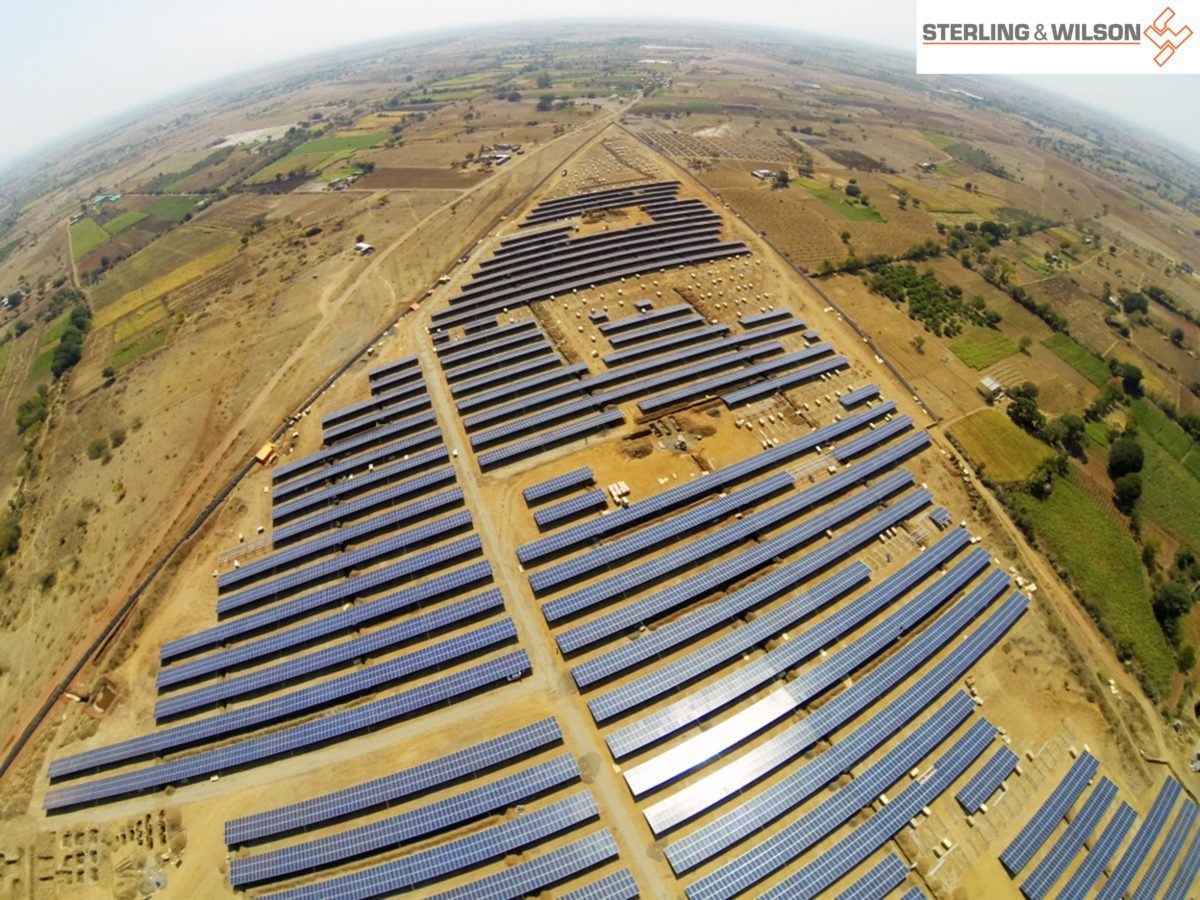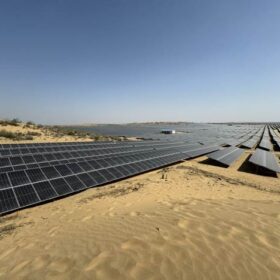India needs a large land footprint to meet its renewable energy targets, ranging from approximately 55,000 to 125,000 km2, or areas roughly the size of Himachal Pradesh or Chhattisgarh, respectively—according to a research by The Nature Conservancy.
The research article, “Renewable Energy and Land Use in India: A Vision to Facilitate Sustainable Development,” published in the scientific journal Sustainability, shows that if renewable energy development proceeds with the singular aim of maximizing resource potential, approximately 6700–11,900 km2 of forest land and 24,100–55,700 km2 of agricultural land could be impacted at various scales. These losses could cause environmental and social conflicts, jeopardize financial investment, and in turn slow the expansion of renewable energy in the country.
Wasteland: The silver lining
The Nature Conservancy analysis also shows that there is ample opportunity (more than 10 times what is needed) to achieve India’s solar and wind goals on converted lands, which are likely to have lower biodiversity or agricultural values. Twenty per cent of India’s 329 million hectares is classified as wasteland, which is enough for renewable goals deployment.
This is a significant opportunity as our country scales up renewable energy production and may lead to faster renewable energy project implementation, lower project costs, and increased energy access.
A win-win proposition
India has made the ambitious commitment to increase renewable energy production to 175 GW by 2022. Recently, at the UN Climate Action Summit in New York on September 23, 2019, Prime Minister Narendra Modi made a pledge to increase India’s renewable energy target to 450 GW to reduce India’s dependency on fossil fuel for energy and to combat climate change.
To achieve this target, one of the biggest obstacles is acquiring land for establishing infrastructure for renewable energy. Since proliferation of rooftop solar has been slow in India and solar development to date largely consists of ground-mounted solar, the aim of this study was to quantify the potential impacts to existing agricultural and natural lands from renewable energy development.
The study also assessed if the 2022 goals can be met if the renewable energy development was constrained to lands already converted or degraded by human activities. This is the first study to have examined the potential impacts to existing agricultural and natural lands from renewable energy development if it is sited without the consideration of existing land use.
The research, conducted by The Nature Conservancy together with the Center for Study of Science, Technology and Policy (CSTEP), demonstrates that developing energy projects on lands already degraded by human activities rather than placing new infrastructure within natural habitats or areas of high agricultural production would reduce the cumulative impacts on land and minimize land use conflicts.
Targeting renewable energy to already degraded areas with lower potential conflicts will not only help India achieve clean energy targets but also maintain food security and protect biodiversity. Focusing development in this manner has the potential to reduce land conflicts, facilitating project timelines and reducing project cost as a result of reduced related risk. Proactively developing India’s future renewable energy projects on these lower-impact lands is a win-win for development and conservation.
This content is protected by copyright and may not be reused. If you want to cooperate with us and would like to reuse some of our content, please contact: editors@pv-magazine.com.









Good article. However silent on the prospects of off shore area for solar PV and their impact on the needs for land area.
Increasing the solar target to 175 GW will not alter the situation as far as environmental issues are concerned unless there is corresponding reduction in fossil fuels usage. This requires careful planning.
The best course will be to provide solar and other renewables in rural areas along with storage. It will solve the problems of reliable power supplies to rural areas with mini grids etc., and consequently reduces the losses which will be a double gain and it results in people’s support also.
Without this high end targets wil result in wastage of resources.
Waste land – the silver lining – Pavgadda Solar Park in Karnataka is a example.
Kudos to Karnataka government for identifying 13,000 acres which is equal to 53 Sq km of land belonging to farmers that had no fertility otherwise. Sensing the plight of farmers who owned land but remained in misery due to unfavourable conditions and the plight of Solar developers who were struggling to get land for development, KN government worked out a proposal as per which the entire land mass would be taken over by government and rental at a reasonable annual rate would be paid to farmers for next twenty five years with escalation over time and the land used to develop solar park that will turn out to be the largest in world.
The project took giant leap by virtue of this decision and sees Karnataka getting a prominent place in solar power generation . If such proposals benefitting multiple agencies , masses and objectives of government can be thought of across the nation and put in place, land and evacuation problems that plague the renewable energy industry will give way in discussions and deliberations to possible generation capacity and carbon credit.